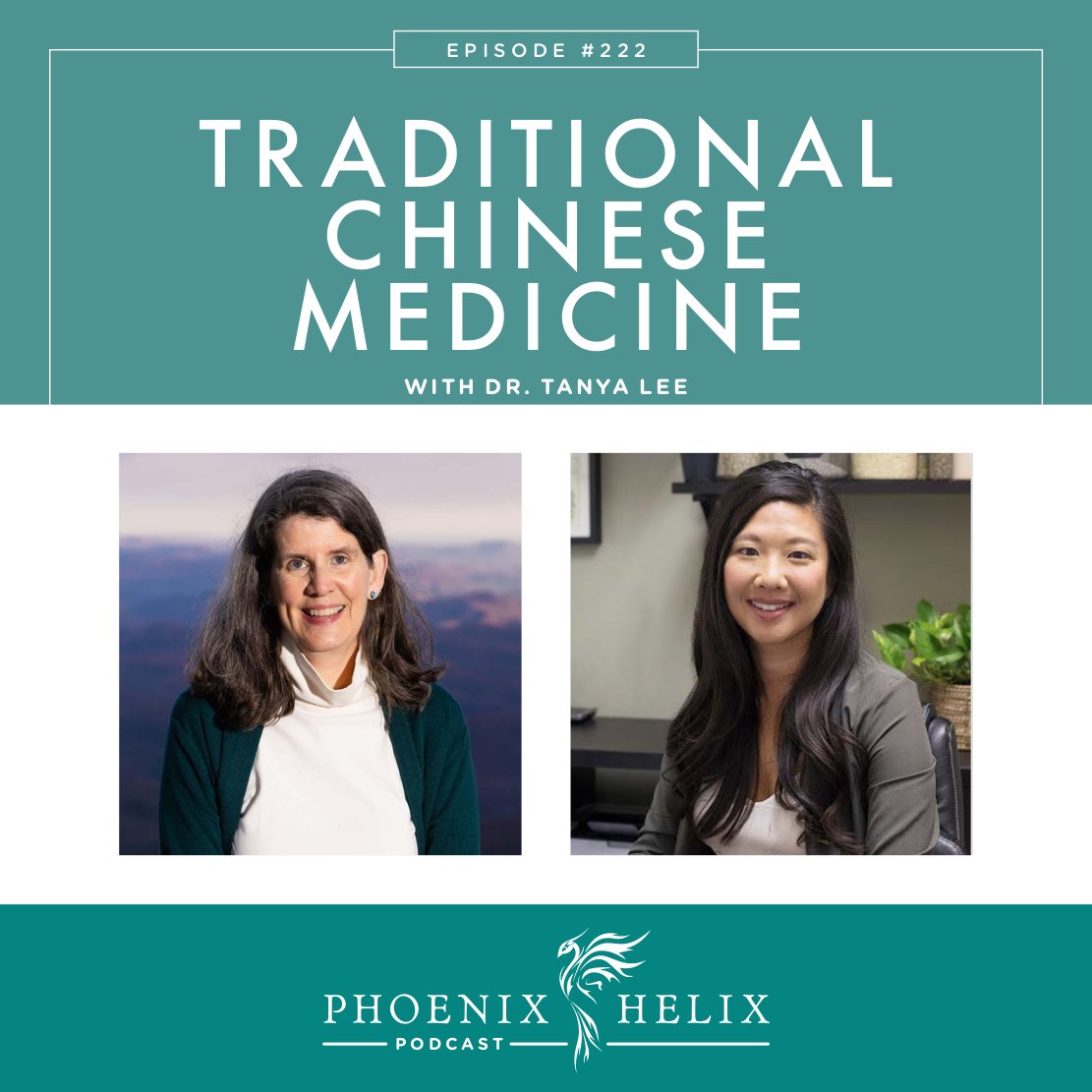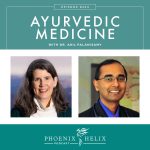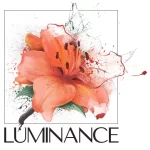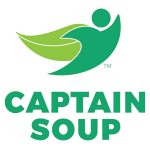Complementary and Alternative Medicine for Autoimmune Health
When it comes to chronic illness, Western Medicine can be very helpful, but it’s rarely enough on its own to restore a high quality of life. People with autoimmune disease do a lot of self-care, and we also seek help from other branches of medicine. Traditional Chinese Medicine is an ancient medical tradition that is still helping people today. Acupuncture is its most famous component, but TCM is a holistic approach to health that goes beyond the needles. Today, we’re going to learn how Traditional Chinese Medicine may help people with autoimmune disease. My guest is Dr. Tanya Lee. She is a naturopathic doctor who specializes in helping people with chronic illness, and TCM is one of her medical specialties.
Listen to the Show
- Subscribe to my podcast through your favorite podcast app: iTunes, Stitcher, Google, TuneIn, Spotify, Amazon, etc.
- You can also listen to the episode right here through the player below, and if you subscribe to my newsletter you’ll get notified of future episodes.
Podcast: Play in new window | Download
Show Notes
- Intro (0:00)
- Thank You to Our Podcast Sponsor – Luminance Skincare (2:33)
- Today I want to highlight their bestselling facecare trio, which includes their Delicate Cleanser, Rosewater Toner, and Deep Hydration Moisturizer. Each one of these products has over 500 five-star reviews on their website. And they have a sample kit, so you can try it yourself! The Delicate Cleanser gently and deeply cleanses your skin without drying it out. The Rosewater Toner perfectly adjusts and balances the pH of your skin. The Deep Hydration Moisturizer mimics skin’s natural oils to soothe dry skin while maintaining a clear complexion.
- Whereas conventional skincare products are full of chemicals that can hurt our bodies, Luminance is made from ingredients that nourish. Their products are natural, organic, wildcrafted, non-GMO, and gluten-free (and they’re even made in a dedicated gluten-free facility). It’s the cleanest skincare anywhere! And everything is handmade in small batches within the United States.
- They have a complete face and body care line, including cleansers, toners, moisturizers, masks, acne serum, lip balms, haircare, sunscreen, handcrafted soaps, and more.
- Order their sample kit today, and once you fall in love and want to order full-size bottles, use the code HELIX for 10% off your order. (You can also use the HELIX coupon on any Luminance product, not just the facecare trio.)
- Meet Dr. Tanya Lee (4:09)
- Dr. Tanya Lee is a naturopathic doctor who specializes in helping people with chronic illness. She pursued naturopathy on the advice of friends and colleagues, and fell in love with the holistic approach to the body and its connection to nature.
- As more people with autoimmune disease became her patients, she realized there was a gap in care. Very few practitioners knew how to help patients navigate the complexity of autoimmune health. Her background in biochemistry, herbalism, and immunology gave her a blend of knowledge that helped guide effective treatment.
- Her clinical approach blends biomedical science, botanical medicine, nutritional science, and Traditional Chinese Medicine.
- The Philosophy of Traditional Chinese Medicine (TCM) (6:36)
- TCM is a system of medicine that strives to understand the nature of health and illness in relation to a person’s internal health, and how it responds to the external environment within the context of nature.
- A healthy body is one that has a strong constitution, maintains balance, has a healthy flow of energy, and can adapt well to changing external factors.
- Health is determined by the vitality we are born with. This is called Essence or Jing in Traditional Chinese Medicine.
- How we nourish our body through diet, movement, and environmental exposure determines whether or not we remain healthy throughout our lifetime.
- The philosophy is very similar to naturopathy and functional medicine, but TCM uses different language and terminology.
- Yin/Yang are terms used frequently in TCM. Yin represents substance and coolness, and Yang represents energy and heat. The goal in TCM is balance between Yin and Yang. For example, the blood in the body is a Yin substance, but Yang is the energy which moves the blood through the system.
- Shared Knowledge between TCM & Western Medicine (9:12)
- There are many parallels between TCM theory and Western scientific understanding of the human body. What’s impressive is that ancient practitioners of TCM gained a detailed knowledge of the body and disease states without laboratory studies or cutting people open.
- For example, in TCM, a heart attack is called “heart blood stagnation.” In Western Medicine, it’s described as a blockage where the blood can’t flow through the coronary arteries.
- Dr. Lee is trained in both branches of medicine, and there are many such parallels when it comes to pathologies and mechanisms of action. The language differs, but the understanding is similar.
- Another example is the modern scientific principle of genetics and epigenetics, which we talk about a lot on this podcast. Our health isn’t solely defined by our genes. Epigenetics are the factors that influence genetic expression in healthy or unhealthy directions. This is a relatively new scientific discovery in Western Medicine. TCM has always held this knowledge. Instead of using the term “genetics”, TCM describes inherited health as Essence or Jing, but TCM has always known that lifestyle influences health.
- TCM Intake – Health History (10:43)
- Like naturopathy and functional medicine, TCM practitioners take a detailed health history covering every system of the body. The goal is to see current symptoms within the context of overall health and lifestyle. In fact, the health history practice in naturopathy and functional medicine is very much based on TCM philosophy.
- However, the questions asked by TCM practitioners may differ from other branches of medicine. For example, when asking about pain, they pay attention to the words the patient uses to describe the pain. That gives them specific information on how to treat. And instead of using a thermometer for body temperature, TCM practitioners ask if the patient feels like a hot or cold person. Questions like these help determine potential diagnoses such as Yin deficiency or Chi deficiency, which are concepts central to Traditional Chinese Medicine.
- Pain Relieving Herbal Recommendations (14:53)
- Herbs are a core part of TCM treatment, and the unique questions within the health history guide the herbs recommended. The goal is to match the characteristics of the herbs to the constitution of the patient. I asked Dr. Lee to give us some examples, and she talked about three different pain-relieving herbs.
- Boswellia is an herb known to reduce COX activity similar to aspirin or naproxen. However, within TCM, Boswellia is known to help with blood stagnation – it moves blood. So, it wouldn’t be recommended to anyone with blood deficiency, even if that person presented with pain. A different herb would be chosen instead.
- Turmeric (Curcumin) is an herb with a wide variety of anti-inflammatory properties. In TCM, turmeric moves both chi and blood and may be recommended to patients with really swollen joints, which is a sign of severe stagnation.
- Berberine is another pain-relieving herb, but a TCM practitioner wouldn’t give it to a patient with a cold nature because it’s known to clear damp heat. However, that quality makes it ideal for a patient with ulcerative colitis who is experiencing inflammation in the digestive tract that is aggravated by hot, spicy foods.
- Pulse & Tongue Diagnosis (17:50)
- In TCM, diagnosis starts with the detailed health history described above. But methods of observation are used as well, including pulse and tongue diagnosis.
- When looking at the pulse, there are organs that correspond to three points on the pulse, so TCM practitioners assess each point, checking to see if the pulse is wiry, slippery, deficient, floating, etc. This provides added information for diagnosis. (Resource: Pulse Diagnosis Chart)
- When looking at the tongue, the quality is assessed overall: Is it pale, enlarged, coated, etc.? Then, a map of the tongue also corresponds to different organ systems. (Resource: Tongue Diagnosis Chart)
- Yin/Yang: Herbs & Acupuncture (20:27)
- The most common treatments within Traditional Chinese Medicine are herbs and acupuncture, and they work together.
- Herbs are Yin. They are a substance given to the body to nourish internal health.
- Acupuncture is Yang. It’s energy medicine which removes energetic blocks within the body.
- What Are Meridians? (21:17)
- In Traditional Chinese Medicine, it is believed that the human body is an energetic system, and meridians are energetic pathways through the body.
- There are 12 meridians, each corresponding to a different organ system, and there are acupuncture points along each meridian.
- In addition to releasing energetic blocks within meridians, there are also acupuncture points that can help tonify and balance Yin/Yang as well.
- A skilled TCM practitioner will create a comprehensive acupuncture protocol to address all the dysfunctional patterns they’ve assessed in a patient.
- (Resource: Meridian Graphic)
- What Does Acupuncture Feel Like? (22:10)
- Every practitioner has a different style, and some believe you need to feel some pain with acupuncture in order for it to be effective. Dr. Lee disagrees.
- In her clinic, she tells patients they should feel a deep sensation when the needle is inserted. That validates the needle is in the right spot, but it shouldn’t be painful. It’s normal to feel a small prick when the needle goes in, but that discomfort should dissipate quickly. You should never feel a shooting pain – that indicates the needle has hit a nerve and should be removed.
- Overall, the experience of acupuncture should feel very relaxing, and if you’re ever uncomfortable, let your acupuncturist know.
- Thank You to Our Podcast Sponsor – Captain Soup (23:56)
- Captain Soup sells nutrient-dense freezer meals, designed specifically to enable the body’s healing. They only use the highest quality ingredients including locally sourced, 100% grass-fed and finished meats, wild-caught seafood, 100% organic vegetables, and bone broth made in-house from the bones and organ meat from the best grass-fed lamb in the world.
- They sell 7 flavors of soup which are paleo, keto, and Wahls protocol-compliant. 5 of those flavors also fit the elimination phase of the Paleo Autoimmune Protocol. 4 of the flavors are Low-FODMAP. And 2 flavors are GAPS-compliant.
- Here are the flavors: Classic Lamb, Dijon Lamb, Italian Beef, Classic Beef, Dijon Beef, Green Machine & Tom Kha. (Tom Kha is a seafood soup that’s available in-season.) They also have the full ingredient list for every flavor on their website.
- You can buy pre-selected variety packs or build your own custom box. They also have a nutrient-dense liver pâté that can be substituted for any soup upon request.
- Order today and get nutrient density delivered to your doorstep! Use the code PHOENIX to save $25 off your first order.
- Moxibustion & Cupping (25:38)
- These are two other therapeutic techniques that may be offered as part of TCM treatment.
- Moxibustion is a technique where herbs are burned and placed on acupuncture points or waved over acupuncture points. The goal is to warm up organ systems that may be cold and stagnant. For example, when women experience extreme period pain, there’s often cold and blood stagnation in the uterus. Dr. Lee may use moxibustion over the uterus to bring both heat and blood flow to that area. (Resource Video: Moxibustion Demonstration Over Acupuncture Point.)
- Cupping is another technique that can help break up stagnation, especially blood stagnation, and many acupuncturists use it in addition to acupuncture. Dr. Lee uses it mostly for musculoskeletal issues, because it’s very effective at breaking up myofascial tension and promoting blood flow. One note about cupping: it’s not a painful treatment but it often leaves bruises behind. (Resource Video: Cupping Therapy in Chinese Medicine.)
- Acupressure & Ear Seeds (29:28)
- Acupressure is when you put pressure on acupuncture points instead of inserting needles. While not as effective as acupuncture, Dr. Lee recommends it as a home care technique to help maintain the treatment benefits between acupuncture appointments. She will often teach patients one or two points to massage at home.
- The ear lobe has many acupuncture points. Ear Seeds are tiny balls with an adhesive back that a TCM practitioner sticks on an acupuncture point. The patient can then massage that seed to stimulate the point. A common Ear Seed placement is on a relaxation point called Shen Men. (Resource: Ear Seeds website.)
- Herbal Formulations (31:48)
- Traditionally, herbs are given to patients in dried form, and the patient is asked to make large decoctions by simmering the herbs low and slow. The patient then drinks the liquid throughout the day or adds it to soup. Dr. Lee finds that her patients prefer the convenience of premade herbal formulas, so she makes tinctures and teas to give to her patients instead.
- Capsules are another way to prescribe herbs in Traditional Chinese Medicine. Chinese herbs tend to be prescribed at high doses. Dr. Lee prefers to use Western herbs and moderate dosing, but she uses TCM philosophy to choose the right herbs for each patient.
- Other Home Care Recommendations (33:17)
- Movement is a key part of a healthy lifestyle within TCM and essential for people with autoimmune disease. The only time Dr. Lee wouldn’t recommend exercise to a patient is if they are extremely deficient (underweight, exhausted, not digesting food properly). Her goal would be to help them heal those deficiencies first. Then, movement would become beneficial. The type of movement she recommends for people with autoimmune disease are gentle forms of exercise that encourage circulation and put the body in new positions. Gentle yoga is a great choice. So is Nutritious Movement, an exercise program designed by Katy Bowman. (Resource: Autoimmune Exercise Series.)
- Tai Chi & Qi Gong are forms of exercise with a long history within TCM. Similar to yoga, they are coordinated postures of breathing and movement. While some people practice a standard series of postures, a seasoned Qi Gong master could help someone personalize their practice, prescribing postures to specifically target their health issues and help restore balance. For example, some postures help build yin, clear heat, or build chi, etc. (Resource: Gentle Tai Chi and Qi Gong Video.)
- Hydrotherapy is a great way to increase both lymph and blood circulation. Contrast Showers are a potent technique where you alternate the water temperature in a way that pumps the circulatory vessels in your body. Always begin with hot for 2-3 minutes (as hot as you can tolerate). Switch to cold for 1 minute (as cold as you can tolerate). Repeat for a minimum of 3 cycles, and always end with cold. Saunas and Cold Plunges are another way to get this benefit. Note: if you have an autoimmune disease like MS with heat intolerance, approach this technique cautiously. Some people with MS may benefit from cold therapy without the heat.
- Dry Skin Brushing is another way to stimulate circulation that doesn’t involve heat or cold. I have a tutorial in my article: 3 Ways to Move Your Lymph.
- Kidney Belt: A lot of people with autoimmune disease have kidney deficiencies within TCM philosophy. A “kidney belt” is simply tying a scarf around your waist. It brings warmth to the kidney area. Symptomatically, it’s great for people who run cold, and it can also help with mild low back pain.
- Thank You to Our Podcast Sponsor – Fully Healthy aka ShopAIP (42:30)
- FullyHealthy.com is the new home of ShopAIP, an online store dedicated to the Paleo Autoimmune Protocol. With hundreds of items for the elimination phase of the AIP, and products labeled by reintroduction category as well. You can find protein bars, sauces and condiments, AIP-friendly spices, cooking and baking ingredients, waffle and pancake mix, delicious snacks, and more. It can be hard to find AIP products. Fully Healthy makes it easy!
- In addition to AIP foods, Fully Healthy is expanding their offerings to accommodate other specialty diets as well. That’s the reason behind the name change. Their goal is to make healthy shopping easy for you and your whole family!
- Everything on the website is clearly labeled with multiple ways to find the products you need. If you’re not sure where to begin, check out the Phoenix Helix Bundle, which contains some of my favorite AIP pantry items.
- Go to FullyHealthy.com and use the code PHOENIX for 10% off your first order!
- Organ Systems within TCM vs. Western Medicine (44:01)
- In Western Medicine, the organs are seen as single parts of the body with very specific functions.
- In TCM, organ systems are looked at energetically (each meridian is associated with an organ system). The focus is on how dysfunctions within organ systems impact the body as a whole. Emotions are also associated with different organs.
- An organ dysfunction within TCM doesn’t mean there is a corresponding organ disorder within Western Medicine.
- Diagnostic language in TCM is very different than Western Medicine. For example, a TCM practitioner would never diagnose someone with lupus or rheumatoid arthritis. Instead, an example of a TCM diagnosis might be: liver chi stagnation with heart blood deficiency.
- Here’s an example of how the liver is looked at in Western Medicine, TCM, and Functional Medicine:
- The liver in Western Medicine is seen mainly as an organ of detoxification. A doctor would only be concerned if blood tests showed elevated liver enzymes, or an ultrasound showed fatty liver or cirrhosis.
- In TCM, the liver is responsible for the movement of blood and lymph throughout the body, so problems elsewhere in the body can signal liver issues. For example, if a patient is experiencing heavy, dark, painful periods, that might be a sign of liver/blood stagnation.
- If that same patient went to a Functional Medicine practitioner, they also look at the body holistically. They would know that the liver is responsible for the metabolism of estrogen, and if the patient has genetic mutations that slow down that metabolism, that can lead to excess estrogen and painful periods. So, both TCM and Functional Medicine practitioners would address the liver as part of medical treatment, but they might use different techniques.
- TCM Philosophy of Autoimmune Disease (48:23)
- There is no formal TCM diagnosis for autoimmune disease. Every patient is seen as an individual. If 10 patients with rheumatoid arthritis go to a TCM practitioner, they will likely receive different diagnoses and treatments will vary.
- That said, there are some common patterns. Many patients with autoimmune disease have dysfunctional patterns within the kidneys. The kidneys represent our vitality and they hold the Jing we are each born with. This equates to genetics in Western Medicine and shows a vulnerability to autoimmune disease.
- Another pattern is a dysfunctional immune system which in TCM is called latent heat. It leaves people vulnerable to pathogens. Leaky gut would also fall under the latent heat diagnosis. Latent heat doesn’t cause autoimmune disease on its own – it needs to be combined with other factors (like Jing). This matches the functional medicine understanding that leaky gut is a precursor to autoimmune disease, but not everyone with leaky gut develops autoimmune disease. Similarly, infection might trigger autoimmunity in vulnerable people, but not everyone who gets an infection develops autoimmune disease.
- Part of a TCM treatment protocol would address common patterns if present (like kidney dysfunction and latent heat), along with other dysfunctions that are unique to each patient.
- The goal of TCM is to build resilience.
- Finding a Good TCM Practitioner (52:18)
- Just like any branch of medicine, there are great practitioners and not-so-great practitioners.
- Look for people with extensive training. Some people practice acupuncture and/or herbalism through very short training programs and don’t understand the full TCM philosophy, nor the complexities of patients with chronic illness. They are more likely to make mistakes. If there’s a TCM accreditation or regulatory body in your country, state, or province, that can be a helpful resource.
- You can also ask for an informational interview. Ask if the practitioner has experience treating people with autoimmune disease, and ask them to describe their treatment approach. If you are taking conventional medications, ask if they understand the contraindications regarding those medications. This is especially important to consider with any recommendation of TCM herbs.
- If a practitioner tells you to go off your pharmaceutical medication cold-turkey, that’s a red flag, especially if your medication is helping to keep your health stable. In time, it might be possible to reduce medication, but it’s not something that happens right away.
- Lastly, word-of-mouth referrals are wonderful. If you know someone who sees a TCM practitioner, ask them about their experience.
- Outro (56:05)
- Dr. Tanya Lee practices in Toronto, and you connect with her through her website. She’s about to go on maternity leave but will be accepting new patients again in 2024. In the meantime, she works with a team of other qualified practitioners and is happy to give referrals. Her clinic website is Annex Naturopathic.
- Eileen (your podcast host) is the author of multiple books, written to help people thrive with autoimmune disease. Learn more on the Books Page.
- If you like this podcast, follow or subscribe through your favorite podcast app. You can also subscribe to Eileen’s monthly newsletter.
- Check out the entire archive of podcast episodes.
You May Also Be Interested In
Spreading the Word
If you like the podcast, please leave a positive review in iTunes. It would mean the world to me, and also helps others find the podcast. Here are some quick instructions using your iPhone:
- If you are already subscribed to my podcast: (1) Click the purple podcast icon. (2) At the bottom of the screen, click Library. (3) At the top of the screen, click Shows. (4) Click the Phoenix Helix podcast image. (5) Scroll down the page, and you’ll see Ratings and Reviews. Scroll down a little bit more and click on Write a Review. This will bring up the review screen. Tap 5 stars (if you love the podcast), and then click in the title box, and it will bring up the keyboard. Enter a title and short review. (6) Click Send in the upper right corner. (7) Thank you! Positive reviews give the podcast a higher search ranking in iTunes, helping people find it and letting them know it’s a quality podcast and worth their time to listen.
- If you haven’t subscribed to my podcast: (1) Click the purple podcast icon. (2) In the lower right corner, click the magnifying class. (3) Type Phoenix Helix in the search box. (4) Click the podcast cover in the Show list. (5) If you’d like to subscribe, click the + sign at the top of the screen. (6) To write a review, scroll down the page, and you’ll see Ratings and Reviews. Scroll down a little bit more and click on Write a Review. This will bring up the review screen. Tap 5 stars (if you love the podcast), and then click in the title box, and it will bring up the keyboard. Enter a title and short review. (7) Click Send in the upper right corner. (8) Thank you! Positive reviews give the podcast a higher search ranking in iTunes, helping people find it and letting them know it’s a quality podcast and worth their time to listen.








